-
Recent Posts
- Trump’s “Big Beautiful Bill” Is a Grotesque Giveaway to Fossil Fuel Billionaires While Adding $3.3 Trillion to Nation’s Debt
- Senator Chris Murphy Charges that Trump “Has Opened a Channel for Bribery”
- Congressman Casten: Trump’s Assault on the Rule of Law Is Causing Capital Flight Out of U.S. by Foreign Investors
- Trump’s Approval Rating Drops to 80-Year Low; IMF Says U.S. Tariffs Now Exceed the Highs During the Great Depression
- Nasdaq Has Lost More than 3,000 Points Since Trump’s First Full Day in Office in 2025; the Pain Has Barely Begun
- The Bond Crisis Last Week Was a Global No-Confidence Vote in U. S. President Donald Trump
- Trump’s Tariff Plan Guts $5 Trillion in Stock Value in Two Days; Senator Warren Calls for Emergency Action Before Markets Open on Monday
- Trump’s Attacks on Big Law, Universities, and the Media Have a Common Goal: Silence Dissent Against Authoritarian Rule
- Trump Administration Gives All Clear to Laundering Money through Shell Companies and Bribing Foreign Officials
- Four Megabanks on Wall Street Hold $3.2 Trillion in Uninsured Deposits – Which May Explain Senator Schumer’s Pivot to the GOP to Stop a Government Shutdown
- Here’s What Came Crashing Down Yesterday for Trump’s “Genius” Guy, Elon Musk: Tesla Stock, Access to Twitter (X), His Years of Secret Calls with Putin
- After Banning the Associated Press, Trump Is Now Targeting Specific Journalists That He Wants to See Fired
- Closely Watched Atlanta Fed Model Predicts Negative U.S. Growth in First Quarter
- Trump’s Gangster Diplomacy Makes Front Page Headlines Around the Globe
- Who Benefits Alongside Elon Musk If He Succeeds in Killing the CFPB: the Megabanks on Wall Street that Underwrite His Tesla Stock Offerings
- In Trump 1.0, the State Department Used Taxpayer Money to Publish a Book Elevating Elon Musk to a Superhero; It Was Funded by USAID, the Agency Musk Wants to Quickly Shut Down
- News Host Joy Reid Raises Threat of Trump Selling U.S. to Putin; Ten Days Later Her Show Is Cancelled
- Elon Musk’s DOGE Appears to Be Violating a Court Order; It Has Taken Down Hundreds of YouTube Videos that Educate Americans on How to Avoid Being Swindled
- Barron’s Releases Audio of Jamie Dimon Cursing Out His Workers at a Town Hall, as Dimon Plans to Dump Another One Million JPM Shares
- There’s One Federal Investigative Agency that Neither Trump nor Elon Musk Can Touch: It Just Opened an Investigation into DOGE
- Elon Musk’s Companies Were Under Investigation by Five Inspectors General When the Trump Administration Fired Them and Made Musk the Investigator
- Donald Trump Gives the Greenlight to Goldman Sachs and JPMorgan Chase to Return to Bribing Foreign Officials
- After Tech Geeks Built a Back Door to Loot Billions from FTX, Republicans Refuse to Investigate What Elon Musk’s Tech-Squad Did Inside the U.S. Treasury’s Payment System
- Former Prosecutor, Now U.S. Senator, Informs Tesla That CEO Musk May Be Violating Federal Law and to “Preserve All Records”
- Trump’s Hedge Fund Guy Is Now Overseeing the U.S. Treasury, IRS, OCC, U.S. Mint, FinCEN, F-SOC, and the Consumer Financial Protection Bureau
- As Elon Musk Begins Shutting Down Payments to Federal Contractors, a Strange Money Trail Emerges to His Operatives Inside the U.S. Treasury’s Payment System
- JPMorgan Chase Charged by Yet Another Internal Whistleblower with Cooking the Books
- We Asked Google’s AI Search Model, Gemini, Questions About the Fed and Wall Street Megabanks: It Got the Answers Dead Wrong
- With Trump and Melania’s Crypto Coins Likely to Raise Legal Challenges, Why Didn’t Trump Fire the SEC’s Inspector General in His Purge of IGs?
- Fossil Fuel Industry Could End Up Paying Tens of Billions for LA Wildfires and Deceiving the Public on Climate Change for Decades
- It’s Being Called the Biggest Grift by a President in U.S. History: Trump and First Lady Launch their Own Crypto Coins
- Trump Plans to Install a Fracking CEO to Head the Energy Department and Declare a National Emergency on Energy to Gain Vast Powers
- Fossil Fuel Money Played a Role in the Los Angeles Fires and the Push to Install Pete Hegseth as Secretary of Defense
- When It Comes to Wealth Retention in Retirement, Concrete May Be the New Gold
- Wall Street Watchdog Warns “Clock Is Ticking on a Coming Catastrophic Financial Crash”
- Wall Street Is Sending the Same Message to Americans on Fossil Fuel Financing that It Sent on Cigarettes: Drop Dead
- In a Six-Week Span, this Dark Pool with a Curious Past Traded 3.7 Billion Shares
- Wall Street’s Lobby Firm Hired Eugene Scalia of Gibson Dunn to Sue the Fed for Jamie Dimon
- Postmaster General Louis DeJoy Made $561,051 in Compensation in 2024, as Mail Costs Spiked and Delivery Deteriorated
- Fed Chair Jay Powell Sends a Bold Message to Trump and Tanks the Dow by 1123 Points
- The Head of Fixed Income at T. Rowe Price Makes the Scary Case for the 10-Year Treasury to Spike to 6 Percent
- $663 Billion in Cash Assets Have Gone Poof at the Largest U.S. Banks
- Donald Trump to Ring Bell at New York Stock Exchange Today as Hit List Posters Appear in Manhattan Targeting Wall Street CEOs
- Trump Has a Slush Fund to Prop Up the Dollar – Will He Use It to Prop Up Bitcoin Instead?
- A CEO Assassination; a Billionaire Heiress/NYPD Commissioner; a Secret Wall Street Spy Center – Here’s How They’re Connected
- Despite More than 1600 Tech Scientists Signing a Letter Calling Crypto a Sham, Trump Names a Crypto Cheerleader for SEC Chair
- The Fed Rings a Warning Bell: Hedge Funds and Life Insurers Are Reporting Historic Leverage
- Trump’s Nominee for FBI Director, Kash Patel, Has Businesses Financially Intertwined with Trump
- Donald Trump Is at Risk of Getting Named in a Fossil Fuels Conspiracy Lawsuit
- Trump Is Having Difficulty Getting a Lawyer to Accept the Nomination for SEC Chair: Here’s Why
Search Results for: Jamie Dimon
How Criminal Charges Against a Wall Street Icon Went from Front Page News to a Yawn at the New York Times
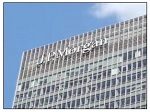
By Pam Martens and Russ Martens: October 19, 2020 ~ On May 2, 1985 the highest law enforcement officer in the United States, the head of the U.S. Department of Justice, Attorney General Edwin Meese, held a news conference to announce that the sixth largest brokerage firm on Wall Street, E.F. Hutton, was pleading guilty to 2,000 felony counts of wire and mail fraud. It had also agreed to pay criminal fines of $2 million and up to $8 million in restitution to the 400 banks it had defrauded. The fraud had lasted less than two years, from July 1, 1980 and February 28, 1982, and consisted of the following according to the Justice Department: “The essence of the charges was that Hutton obtained the interest-free use of millions of dollars by intentionally writing checks in excess of the funds it had on deposit in various banks.” On the following … Continue reading
Citigroup Is Slapped with a $400 Million Fine for Doing Something So Bad It Can’t Be Spoken Out Loud

By Pam Martens and Russ Martens: October 8, 2020 ~ Federal regulators are rapidly becoming bigger Dark Pools of information than those secretive stock exchanges run by the big banks on Wall Street. On Tuesday, September 29, when all eyes were focused on the presidential debate to occur that evening, the Justice Department issued a press release announcing the fourth and fifth felony counts against JPMorgan Chase in the past six years. In an unprecedented move, the Justice Department did not hold a press conference to explain why the country’s largest bank is allowed to perpetually commit felonies with no change in management. The bank admitted to the charges and was put on a three-year probation – its third such probation in six years. Jamie Dimon, the Chairman and CEO of the bank, who has presided over all five felony counts, was left in place at the bank. Yesterday, when … Continue reading
Shhh! Don’t Tell the Fed these Wall Street Banks Have Tanked 34 to 48 Percent Year-to-Date. (The Fed Thinks They’re a “Source of Strength”)
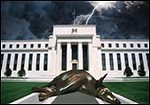
By Pam Martens and Russ Martens: September 24, 2020 ~ Federal Reserve Chairman Jerome Powell’s oft repeated mantra this year – that the behemoth Wall Street banks “are a source of strength” in this economic crisis – is melting away faster than a snow cone in July, along with the share prices of these banks. So whom should Americans believe: The composite wisdom of the market or the opinion of a federal regulator whose supervision of these banks has been far from stellar. The market would seem to have spoken clearly on just how “strong” these banks are. Since the first trading day of the year, January 2, to yesterday’s closing price, here’s the factual reality of just how much common equity capital these banks have bled: Citigroup is down a stunning 48 percent, losing almost half of its common equity capital; Bank of America has lost 35 percent; while … Continue reading
3-Count Felon, JPMorgan Chase, Caught Laundering More Dirty Money
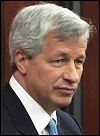
By Pam Martens and Russ Martens: September 21, 2020 ~ The International Consortium of Investigative Journalists (ICIJ) has once again managed to do what federal bank regulators refuse to do in the United States – come clean with the American people about our dirty Wall Street banks. ICIJ dropped a bombshell investigative report yesterday about money laundering for criminals at some of the biggest banks on Wall Street, but you won’t find a peep about it on the front page of today’s Wall Street Journal or New York Times’ print editions. In fact, the New York Times, as of 6:44 a.m. this morning, hasn’t reported the story at all. The Wall Street Journal carries an innocuous headline, “HSBC Stock Hits 25-Year Low,” putting the focus on the British bank, HSBC, when its focus should be on the largest bank in the U.S., JPMorgan Chase, a serial felon. JPMorgan Chase has … Continue reading
The Untold Story of the Nasdaq Whale: SoftBank’s a Guppy; JPMorgan’s a Whale

By Pam Martens and Russ Martens: September 8, 2020 ~ Last week there was a big buzz among financial media outlets regarding the Japanese conglomerate, SoftBank. According to unnamed sources who spoke to the Financial Times, over the past few months SoftBank has paid about $4 billion in premiums, buying call options on individual U.S. technology stocks. The Financial Times called SoftBank the Nasdaq Whale and said its call buying had “stoked the fevered rally in big tech stocks before a sharp pullback” at the end of last week. A call option on an individual stock is a derivative that gives the buyer the right, but not the obligation, to purchase the actual stock at a specified price (strike price) over a specified time period. According to the Financial Times, the call options purchased by SoftBank gave it exposure to approximately $30 billion in the stock of big tech companies. … Continue reading
3-Time Felon JPMorgan Chase Wants to Burnish Its Image by Co-Branding with the U.S. Postal Service’s 91 Percent Approval Rating
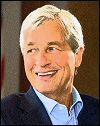
By Pam Martens and Russ Martens: August 20, 2020 ~ We have a marketing suggestion for the U.S. Postal Service Board of Governors if it is nutty enough to accept JPMorgan Chase’s overture to place its ATM machines on the premises of U.S. post offices. The marketing idea goes like this: place a big red, white and blue sign over each JPMorgan Chase ATM machine that reads: “From the wonderful folks who were Bernie Madoff’s bankers.” Business media was abuzz yesterday with the news that JPMorgan Chase has had conversations with the U.S. Postal Service regarding placing the bank’s ATM machines in post office branches. CNBC quoted Trish Wexler, a spokeswoman for JPMorgan Chase, confirming the talks and making the following statement: “We had very preliminary conversations with the U.S. Postal Service several months ago about what it might look like to lease a small number of spaces to place … Continue reading
New York Times Rewrites the Timeline of the Fed’s Wall Street Bailouts, Giving Banks a Free Pass

By Pam Martens and Russ Martens: July 28, 2020 ~ Last Friday, the New York Times officially embarked on what we have been expecting – an attempt to rewrite the current, ongoing Wall Street bank bailout. We were so certain that an alternative reality was going to emerge at the Times, that we had the foresight to create an archive of Wall Street On Parade articles (122 so far) that document every major bailout step the Fed has taken since September 17, 2019 – five months before the first COVID-19 death was reported in the United States. One of our articles, published on January 6, 2020, shows that before the first COVID-19 case had even been reported in the U.S., the Fed had pumped more than $6 trillion cumulatively into the trading units of the largest Wall Street banks — not hedge funds, that the Times now attempts to blame … Continue reading
Catch and Kill: The Protection Racket Used by Trump, Weinstein, Epstein and Wall Street
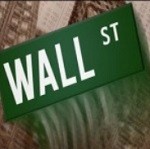
By Pam Martens and Russ Martens: July 22, 2020 ~ When it comes to the crime families of New York, they literally do catch and kill people who can’t be trusted to keep the secrets of their criminal operations. When it comes to the superrich in New York, they’re more inclined to “catch and kill” the story, rather than the accuser. (Jeffrey Epstein’s untimely death last year may be an exception.) On October 11, 2017, Jim Rutenberg, writing for the New York Times about the aiders and abettors to Harvey Weinstein’s sexual assaults, explained the catch and kill strategy as follows: “There is also another dynamic at play, involving something akin to a protection racket. This is the network of aggressive public relations flacks and lawyers who guard the secrets of those who employ them and keep their misdeeds out of public view.” Keeping the secrets out of public view … Continue reading
Using Bank Deposits, JPMorgan Chase Lost $3.2 Billion Trading Stocks and Credit Derivatives in First Quarter
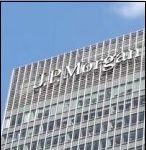
By Pam Martens and Russ Martens: July 13, 2020 ~ Imagine if every bank customer was greeted this week with a big sign just inside their Chase Bank branch that said this: “Dear Customers: We lost $3.2 billion trading stocks and credit derivatives in the first quarter. We did that using your bank deposits. But don’t worry, that pales in comparison to the $6 billion we lost in 2012 in the London Whale mess.” JPMorgan Chase is the largest bank in the United States. Each and every week, millions of Americans write out a check on their account at one of the more than 5,000 branches of Chase Bank; or drop into a branch to open a savings account for a grandchild; or to put money into their own retirement account; or to seek financial advice. Everything looks very crisp, clean, consumer friendly and professional inside that individual bank branch. … Continue reading
As Goldman Sachs and JPMorgan Face Criminal Probes, Barr Fires Top Prosecutor; Tries to Replace Him with Banks’ Former Lawyer, Jay Clayton
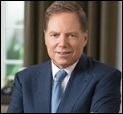
By Pam Martens and Russ Martens: June 20, 2020 ~ Shortly after 9 p.m. last evening, the U.S. Attorney General, William Barr, stunned prosecutors in the Southern District of New York with the announcement that their boss, Geoffrey Berman, was stepping down as U.S. Attorney in that District and would be replaced with the sitting Chairman of the Securities and Exchange Commission, Jay Clayton, who lacks even a shred of criminal prosecution experience. What Clayton does have is a lot of experience representing Wall Street’s largest banks, like Goldman Sachs and JPMorgan Chase, both of whom are currently under intense criminal investigations by the Justice Department. Clayton was a former partner at Wall Street’s go-to law firm, Sullivan & Cromwell, which is currently representing Goldman in the criminal case and representing JPMorgan in various matters. The breaking news last night went downhill from there. Several hours after Barr’s announcement, Berman … Continue reading

